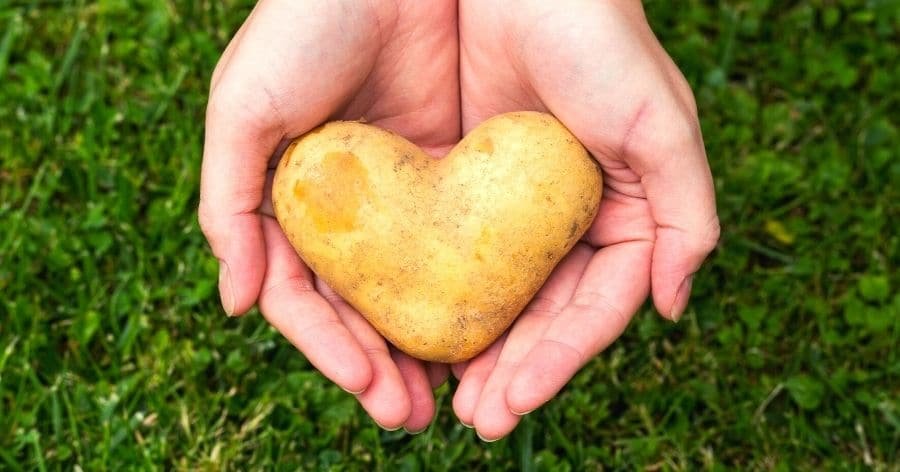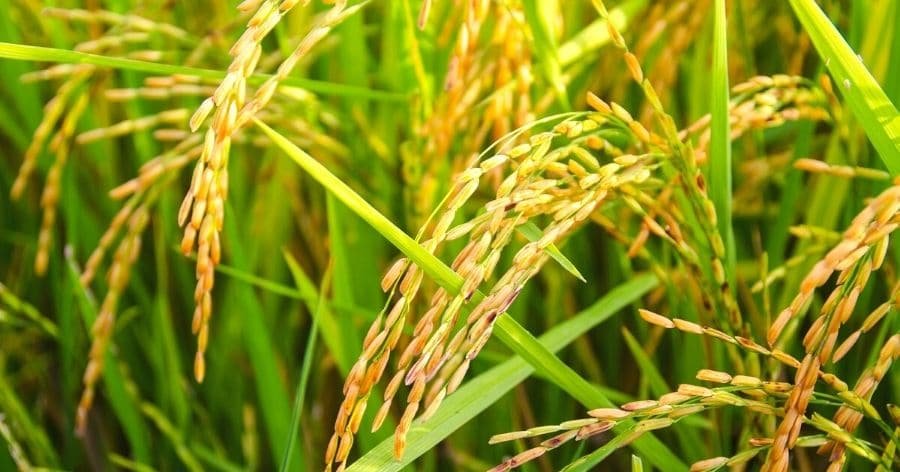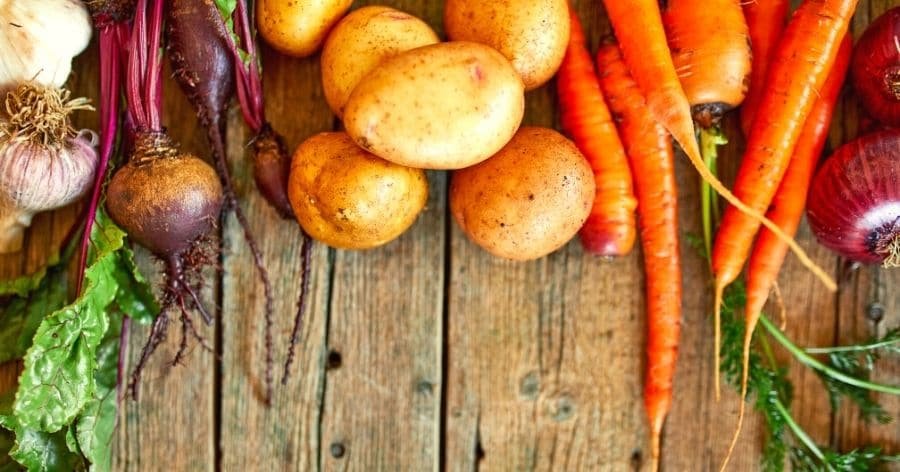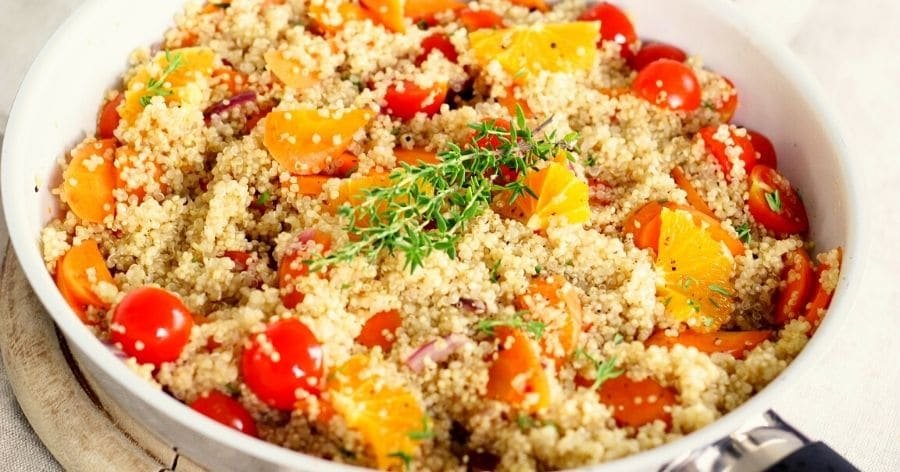The High Carb, Low-Fat Diet Explained

The food we eat is a mix of macro- and micro-nutrients. The ideal proportion of nutrients in the diet is a matter of curiosity of health experts and health-conscious people alike. After all, our entire body function and long-term health depend on it.
Historically, the dietary habits of the people free from chronic illness is seen to be prominently high carb.
But, with contradicting information around diets unfolding almost every day, it gets confusing which diet is best for your health. On the same note, a high carb, low-fat diet has a fair share of misconceptions surrounding it.
If you’ve been wondering if this diet is good for you or not, you are at the right place.
In this article, we are going to explore what a high carb, low-fat diet (HCLF diet) is all about; bust some myths, and learn why it might be an excellent choice for you.
What is a high carb, low-fat diet?
As the term suggests, a high carb, low-fat diet is a diet high in carbohydrates and low in fat.
Carbohydrates and fats are the two main types of macronutrients besides proteins. The macronutrients provide our body with calories or energy for it to function. In the HCLF vegan diet, the proportion of these three macronutrients is, typically, 70% carbs, 15% proteins, and 15% natural fats.
While most of the carbohydrates we eat come from plants, common dietary fats are products from both plants and animals.
Another important thing. There are different types of carbohydrates and fats and they have distinct properties depending on their source and level of processing. Some are good for your health. Some are bad. So, it is essential that we clearly distinguish between the two.

Good carbs versus bad carbs
The amount of carbohydrates in a diet has long been a discussion. While some experts recommend getting 50% of daily calories from carbs, a few others believe otherwise. However, the real issue comes down to whether the carbs you’re consuming are good or bad for your health.
In simplest terms, the main difference between a “good” and a “bad” carbohydrate is that the former is “whole” and the latter is “refined.” Hence, are their health implications.
The good carbs are essentially the carbs from whole plant products. These are rich in natural sugars, starches, and fiber; and are minimal or not processed at all. These nutrients, in their natural form, provide necessary energy and boost the digestive system.
In addition, the whole food carb sources are also abundant in micronutrients (vitamins, minerals, antioxidants). Hence, more so nutritious. Some of the prominent good carbs sources include:
- Whole grains (whole wheat, oats, barley, quinoa, spelt, brown rice)
- Legumes (beans, peas, lentils)
- Root vegetables (potato, sweet potato, beets, turnip, carrot, radishes)
- Other vegetables (pumpkin, corn, broccoli, asparagus)
- Fruits (banana, apple, berries, melons)
- Seeds and nuts (almond, walnut, peanuts, chia seeds, pumpkin seeds)
On the other hand, bad carbs are processed/refined versions of plant products.
The notable trait of bad carbs is that they are devoid of natural fibers and other nutrients due to their processing. Thus, the consumption of bad carbs is linked to various diseases like obesity and diabetes. Some of the common poor nutrition carbs consumed too frequently include:
- Refined flour
- Refined sugar
- Sweetened beverages
- White bread
- Corn syrup, agave syrup
When we talk about a high carb, low-fat, plant-based diet, we are referring to the “good” carbs from the whole food. Not the “bad” carbs from the processed food.

Myths of a high carb, low-fat diet
Myths are a norm for a subject like a diet that is customary and driven by commercialization in today’s times. The high carb, low-fat diet is no different.
Moreover, our dietary evolution with globalization combined with new health discoveries further adds to various myths around the HCLF vegan diet. Here are a few common ones busted.
Myth #1: Carbs make you fat
Synonymizing high carbs with weight gain is one of the biggest misinterpretations. Carbs provide calories. Unused calories are stored as fat in the body. This is true. However, high carb doesn’t necessarily mean excess calories.
As discussed above, the real question is whether you’re eating good carbs or bad carbs. The carbs from whole foods are not as calorically dense as the refined carbs.
In addition, the fiber-rich whole carbs boost metabolism to burn fat. Also, a fiber-rich diet fills your stomach for much longer. So, good carbs help you avoid overeating and thus avoid consuming too many calories.
Essentially, a high carb, low-fat diet helps you lose weight. The results of the McDougall Program show transitioning to a high carb, low-fat vegan diet can help you lose weight within 7 days.
Myth #2 HCLF spikes insulin
This is another myth whose converse is true. Our pancreas produces insulin to regulate the breakdown of carbs, proteins, and fats in our body. Since insulin responds to glucose (a carb) the most, it is believed that carbs cause insulin to spike, raise blood sugar, and eventually lead to fat storage.
However, this response is not prolonged enough to cause fat storage since glucose is a simple carb and easy to break down. The complex carb, fiber, doesn’t need insulin for digestion. Fiber is digested by gut bacteria, so it doesn’t cause an increase in blood sugar.
The blame is to be put on fatty acids. The response of insulin to fatty acids is rather prolonged since fats stay longer in the system. As a result, more insulin is produced till the fats digest. Also, when insulin is busy breaking down the fat, it cannot break down glucose. So, more insulin is produced after breaking down the fat in order to break down the carbs.
In a nutshell, if you’re eating more carbs and less fat, the insulin response is quicker. Hence, less insulin is secreted, and insulin imbalance is prevented.
Myth #3 HCLF causes fat deficiency in the body
This is another myth far from the truth. Our body is capable of producing the fat and cholesterol it requires. Mainly, it needs essential fatty acids (omega 3 and omega 6) from external sources.
A high carb, low-fat diet doesn’t mean no fat at all. It restricts fat to whole natural fats such as avocado, nuts, and seeds. Many grains, legumes, vegetables, and fruits consist of some amount of oil. Thus, your high carb, low-fat, plant-based diet is sufficient to fulfill the body’s fat requirements.

Why low fat?
Low fat is a vital aspect of the HCLF diet. Let’s get into the details of why it is crucial to have less fat along with high carbs in your diet.
High fat diet causes insulin resistance
As discussed, fatty acids are the real culprit for insulin spikes instead of carbs. Along the same lines, studies indicate high dietary fat leads to insulin resistance. The overload of fat reduces insulin’s responsiveness and triggers inflammation. This can cause fatty liver, obesity, diabetes, and even impact brain function.
High fat diet is linked to chronic health problems
Time and again, numerous pieces of evidence suggest dietary fats play a significant role in the development of chronic diseases such as heart disease, diabetes, hypertension, and cancer. These studies show people whose majority calorie intake was from fats were at higher risk of these diseases.
The reason? Metabolic impairments, like insulin resistance, saturated fats and cholesterol (from animal fats and plant-based oils), cause inflammation and clog the arteries.
Why is calorie restriction on a low carb diet not sustainable?
Low carb diets (Keto diet, Atkins diet) have shown some positive short term health effects, such as weight loss. Therefore, they became famous. Interestingly, this is the very reason we had to discuss the myth around high carbs.
All that we discussed in favor of high carbs and low fat brings us to the impact of cutting down calories from carbs versus fats. Low carb diets may promote weight loss, but it is not sustainable.
Two reasons. It’s hard to stay hungry, and there are side effects.
Carbs, especially fibers, fill your stomach for longer. Eating fewer carbs means you’ll end up getting hungry more often. This means either you’ll eat frequently or suppress your appetite. Neither is good for your health.
Coming to the side effects. The low carb diet sends your body into ketosis – a metabolic process of burning fats under the limitation of glucose in the body. However, it comes with consequences, such as fatigue, nausea, muscle cramps, and weakness. Moreover, as your body doesn’t get enough fiber, constipation is another aftermath.
In the long term, all these side effects can become a breeding ground for other health problems, including kidney damage, osteoporosis, and lipid abnormalities.
If you’re planning to lose weight, it’s advisable that you don’t cut calories on carbs.
The healthiest diets on the planet have been high carb
If you’re still not sure about a high carb, low-fat vegan diet, you may want to take a look at the history of the healthiest diets on our planet. They were all high carb. Various studies confirm this.
All large populations of trim, healthy, athletic, war-fighting people, throughout verifiable human history, have obtained the bulk of their calories from starch.
— Dr McDougall (The Healthiest Diet on the Planet)
Dan Buettner, the author of The Blue Zones, also found the longest living people in the world primarily eat high carb, low-fat foods. The studies show that high carb, plant-based diets to be one of the main reasons behind their health and longevity.
Here’s what some of the notable high carb diets throughout history look like.
- The traditional Okinawa diet of Japan marked high intakes of sweet potatoes, rice, and other starchy vegetables.
- Other Asian diets had the prominence of rice, sweet potato, buckwheat, and legumes.
- Incas of South America ate potatoes and quinoa generously.
- Mayans and Aztecs in Central America had corn, squash, and beans as staples.
- Egyptians ate a lot of wheat, barley, lentils, and chickpeas.
Not just that, some of the healthiest ancient whole grains (rye, spelt, teff, amaranth, barley) are making a comeback because of their incredible health benefits.
Conclusion
Contrary to the common misbeliefs, a high carb, low-fat, plant-based diet can be excellent for health. However, it is essential that you eat the good carbs coming from whole foods. Not from processed sources.
Good carbs provide calories, other nutrients, boost metabolism, and prevent overeating. On the other hand, bad carbs can cause many health problems.
Further, eating good carbs neither makes you fat, nor is it responsible for an insulin spike. The real culprit here turns out to be fats. A diet high in fats can cause insulin resistance and give rise to other chronic health issues. So, it’s recommended to stick to natural fats from nuts, seeds, and other produce.
Considering the popularity of low carb diets for weight loss, it is also vital to understand that cutting calories on carbs is not a sustainable approach. In fact, it can lead to overeating and detrimental side effects. In contrast, studies show high carb diets can promote weight loss without these side effects.
Lastly, if you look back at some of the world’s healthiest diets, you’ll find they have been rich in carbs with their staples like whole grains, sweet potatoes, and other starchy food.
Hope this article helped you see the HCLF diet in a new light. And, the best part is that it is not any different from what you already eat on a Whole Food Plant-Based diet. All you need to do is include more starchy vegetables, whole grains, and legumes and cut down on oils and other fats.
Learn how to live Whole Food Plant-Based
Are you ready to to make the dietary change?
As an Amazon Associate I earn from qualifying purchases.
